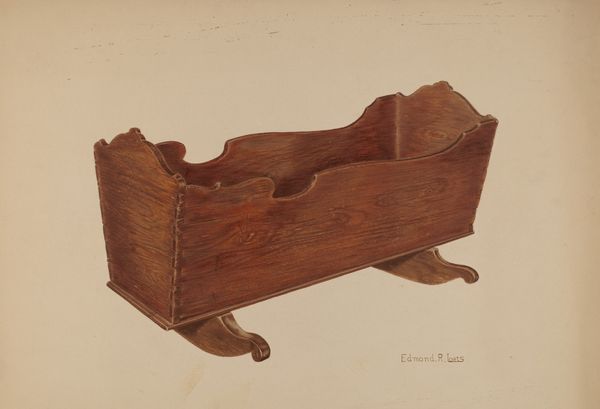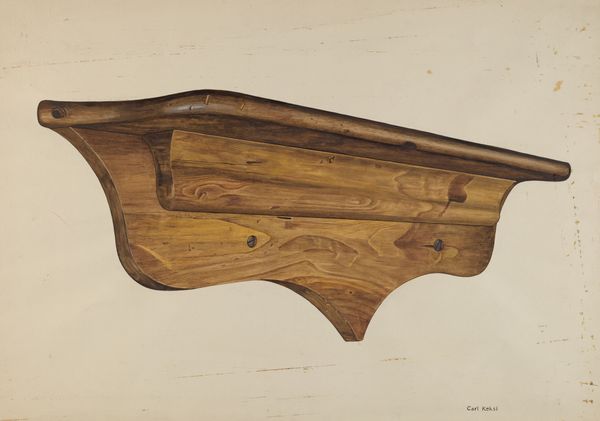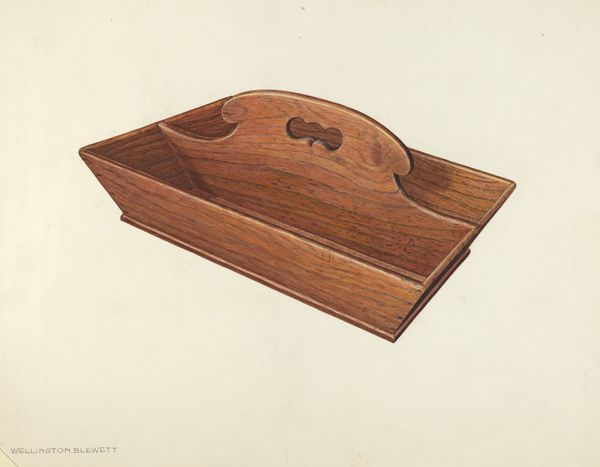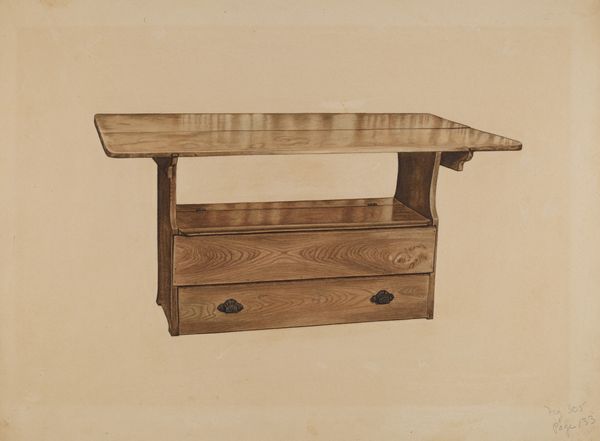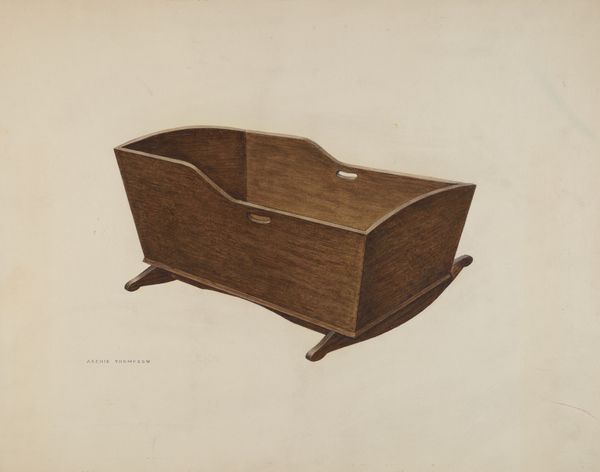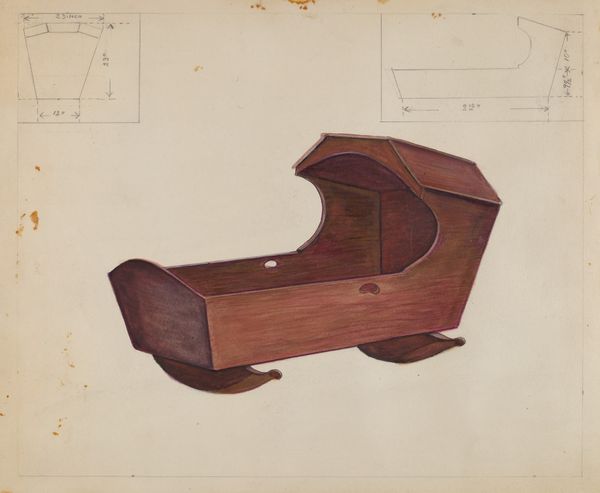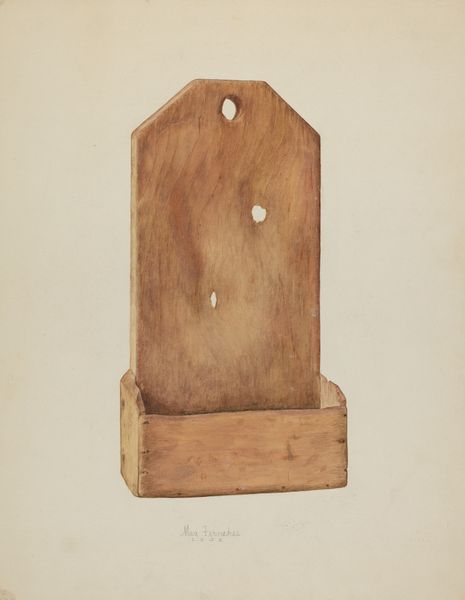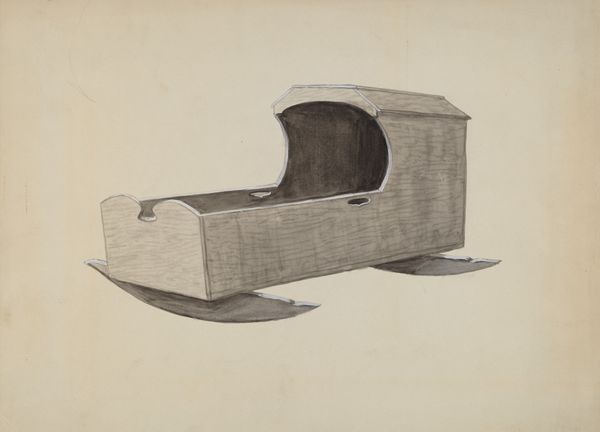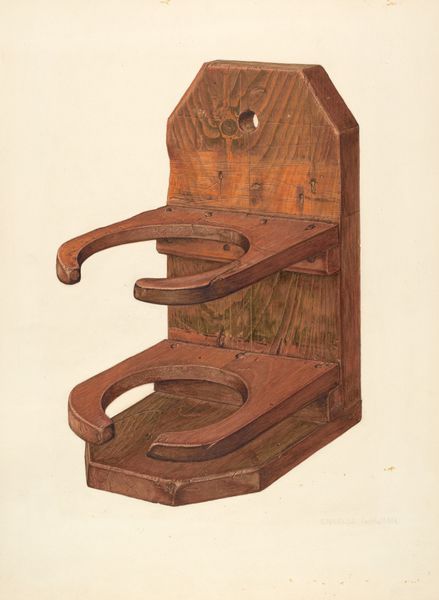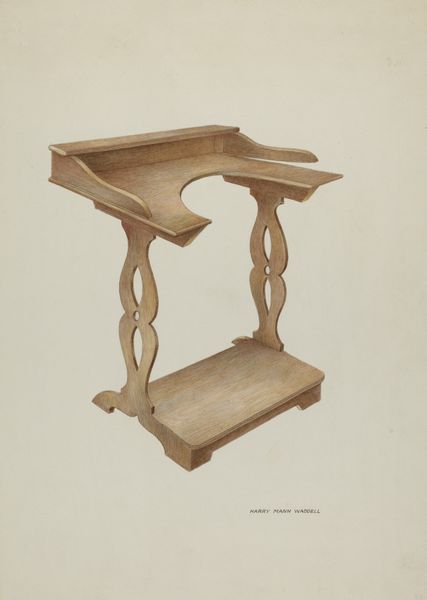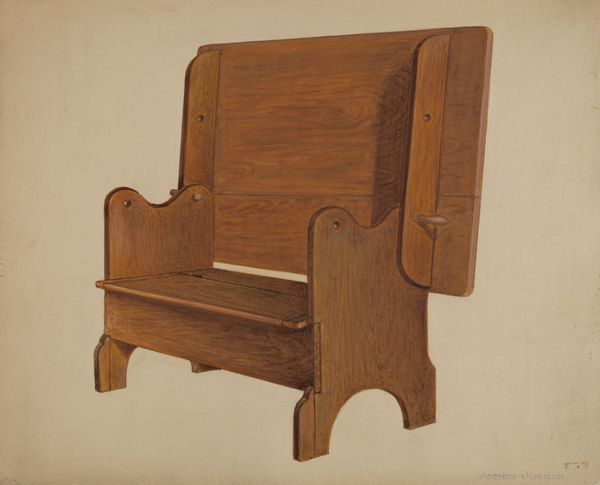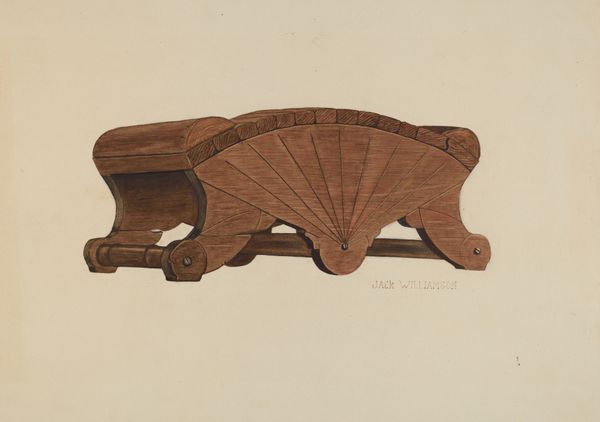
drawing, watercolor
#
drawing
#
charcoal drawing
#
watercolor
#
watercolour illustration
#
charcoal
#
watercolor
#
realism
Dimensions: overall: 40.6 x 51 cm (16 x 20 1/16 in.) Original IAD Object: 39 3/4"long; 17 1/2"wide (approx.)
Copyright: National Gallery of Art: CC0 1.0
Curator: This is "Cradle," a work by Harry King, created around 1940, rendered in watercolor and charcoal. It presents a realistic portrayal of, well, a wooden cradle. What stands out to you initially? Editor: Its solidity. The weight of the wood is palpable, isn't it? The artist has truly captured its physical presence through subtle gradations of tone and texture. It evokes a sense of old-fashioned craftmanship. Curator: And perhaps a nostalgia connected to that, for the era and the role of family? It's worth considering the context. Around 1940, during and following the Great Depression, there was a resurgence of interest in the domestic sphere, often depicted as a source of comfort amidst larger societal instability. Editor: The composition is rigorously geometrical; a study of parallelepipeds offset by the curves of the rocking base. And see how King lets the woodgrain articulate the object. There’s an attention to detail, without drifting into sentimentality. It’s representational without being maudlin. Curator: Precisely. The lack of any additional contextual elements—no blankets, no child—encourages us to focus on the cultural and emotional baggage we ourselves bring to the idea of a "cradle." It functions almost as an icon, a symbol pregnant with meaning. We might consider the work alongside evolving representations of childhood within various sociopolitical movements. The cradle here as a potential vessel, open to meanings projected on it by society. Editor: Indeed. The realism allows us to appreciate the intrinsic geometry of this everyday object. By isolating it, we invite questions regarding form and function: it emphasizes the artistic merit found in simple utilitarian design. Curator: I see your point. We can also interpret King’s choice of such a traditionally feminine object, removed from any female presence, as a potentially disruptive gesture towards mid-century gender norms. It almost begs us to question conventional familial structure. Editor: Yes, the beauty found in functional structure, but for me, it begins with that tactile and tonal density, an exercise in pictorial representation. Curator: An image, indeed, dense in history, and opens to contemporary perspectives. Editor: A well crafted study, whichever way we interpret it.
Comments
No comments
Be the first to comment and join the conversation on the ultimate creative platform.
